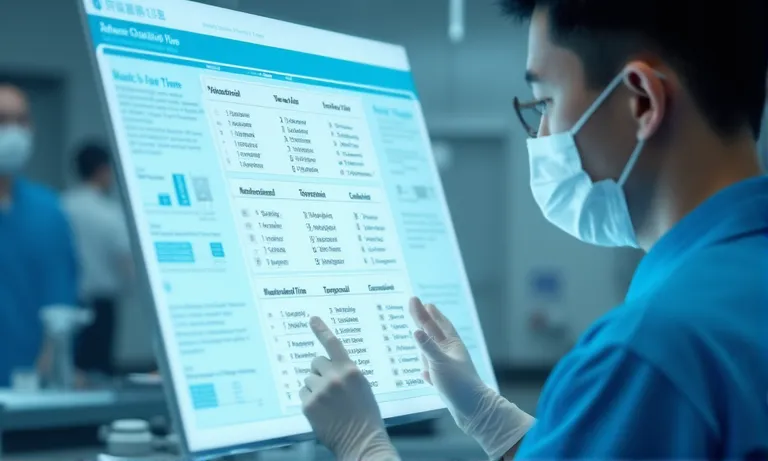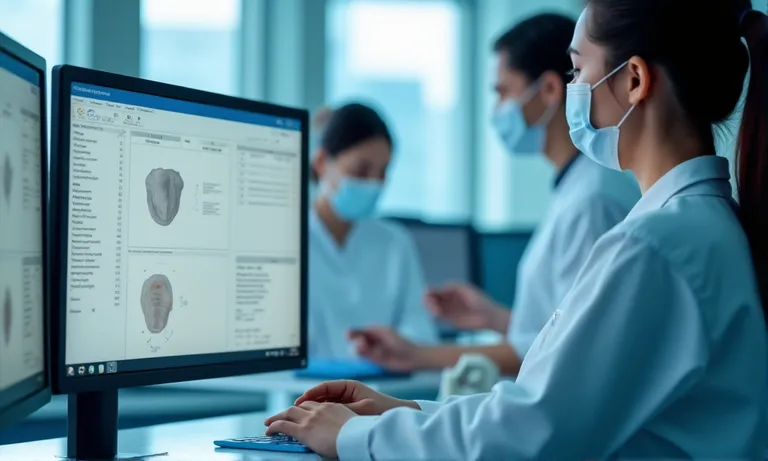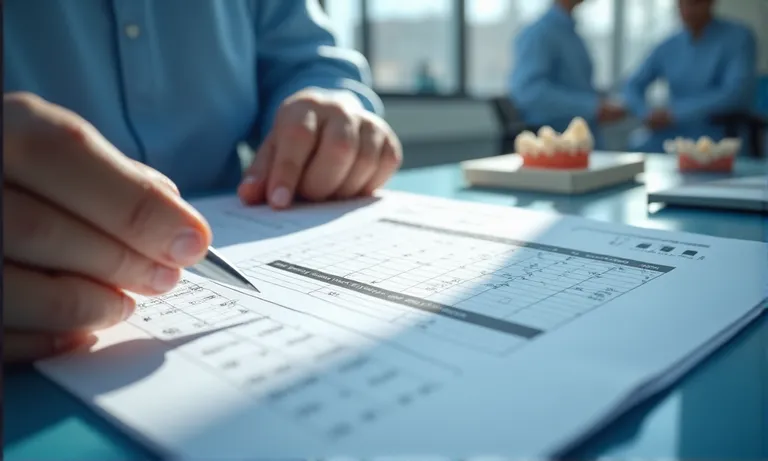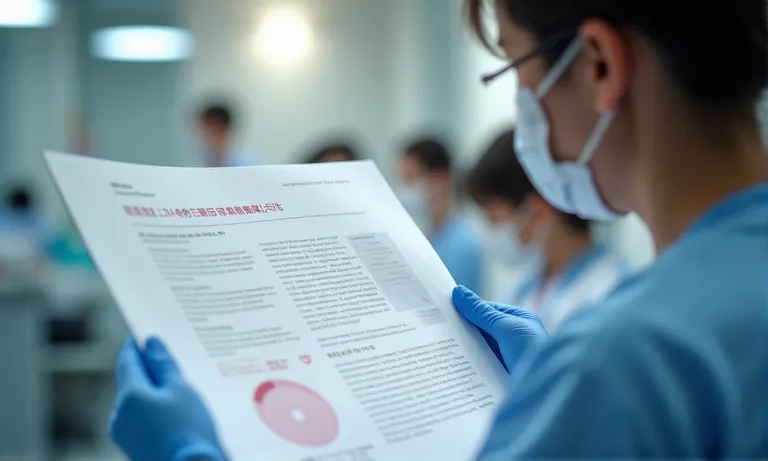Outsourcing crown and bridge work can reduce upfront costs—but maximizing ROI requires more than choosing the lowest price. For dental practices, DSOs, and procurement teams, true value lies in minimizing rework, enhancing consistency, and aligning lab partnerships with long-term operational goals.
Key ROI drivers include:
- Remake Rate Reduction
Improve case outcomes through better clinical-lab alignment and clear submission protocols. - Digital Workflow Efficiency
Leverage CAD/CAM tools and STL validation to accelerate turnaround and reduce manual error. - Full-Cost Visibility
Account for hidden costs—shipping variability, communication delays, and admin burden—not just per-unit pricing. - Lab Capability & Scalability
Choose overseas partners with proven quality systems, responsive support, and readiness for growth. - Strategic Collaboration
Build feedback-driven relationships that continuously refine outcomes and deliver compounding ROI.
This guide provides a structured framework to evaluate and improve outsourcing returns—making every crown and bridge case more predictable, efficient, and financially sound.
What Are the Key Drivers That Affect ROI in Outsourced Crown and Bridge Work?
Maximizing ROI in outsourcing crown and bridge work starts with understanding the structural variables that shape true cost—not just the quoted price. The most influential drivers include remake rates, turnaround time reliability, and material selection, each of which directly impacts clinic efficiency, chair time, and patient satisfaction.
Procurement teams that monitor these metrics holistically—rather than chasing low unit prices—are more likely to secure long-term value and fewer costly surprises.

dental-lab-roi-drivers-remake-turnaround-material
How do remake rates directly impact ROI?
Remakes introduce hidden labor, shipping, and patient management costs. Here’s how different remake rates affect true cost per usable unit:
| Remake Rate | Quoted Unit Price | Adjusted ROI Impact | Notes |
|---|---|---|---|
| 0–2% | $90 | High ROI | Stable operations |
| 5–8% | $90 | Moderate ROI | Margin erosion begins |
| 10–15% | $90 | Low ROI | Frequent rework & delays |
| 15%+ | $90 | Negative ROI | Break-even or loss per unit |
A seemingly affordable supplier with a high remake rate can cost more than a higher-priced lab with consistently low errors.
What is the effect of turnaround time on profitability?
Turnaround time doesn’t just affect delivery—it shapes your daily production rhythm. When cases arrive predictably, clinics optimize scheduling, reduce chair-time gaps, and avoid emergency adjustments.
Unreliable timing, on the other hand, causes:
- Missed appointments
- Patient rescheduling
- Emergency overnight shipping costs
- Staff overtime for follow-ups
Over a quarter, these operational inefficiencies quietly accumulate and chip away at net margins.
How does material choice influence long-term cost efficiency?
Material selection influences remakes, adjustment time, and even patient satisfaction. Key material-based ROI considerations include:
- Zirconia: Durable and esthetic, but requires margin precision; lower long-term remake rates when paired with strong prep protocols.
- PFM: Often more tolerant of prep variability, but higher chairside adjustment time and long-term opacity complaints.
- Lithium Disilicate: Great for esthetics, but more prone to fracture if prep depth is insufficient.
Clinics that align case type with the right material—not just the cheapest—see fewer remakes and better long-term performance.
By understanding these core ROI drivers, clinic owners and procurement leads can shift their evaluation model from “how cheap” to “how reliable and sustainable.” As an overseas dental lab, we often help clients benchmark their real cost-per-case data against market norms to identify where hidden loss is coming from—and how to close the gap.
How Can You Minimize Remake Rates to Improve Financial Outcomes?
Remake rates are among the most direct threats to financial efficiency in outsourced dental work. Each rework adds cost: in lab time, shipping fees, clinical coordination, and patient confidence. Fortunately, most remakes stem from preventable causes—many of which can be controlled through improved communication, documentation, and submission processes.
Reducing remake rates is not about working with a “perfect lab”—it’s about building a process that prevents error in the first place.

dental-lab-remake-inspection-case-submission-issues
What are the common causes of remakes in outsourced crown and bridge cases?
Most remakes trace back to five recurring issues:
- Insufficient or unclear prep margin visibility in the impression or STL file
- Missing bite registration or opposing scans, leading to occlusion errors
- Inconsistent shade communication, especially for anterior cases
- Inadequate photography or use of uncalibrated devices
- Case notes with conflicting or vague instructions
A lab can only fabricate what it receives. The more clarity and context the clinic provides, the lower the risk of rework.
How do clinical records and lab compatibility affect remake rates?
Record quality and platform compatibility are critical. For example:
- STL files must include complete marginal detail; blurred margins increase guesswork
- Labs using 3Shape, Exocad, or similar platforms may require specific scan presets
- Photos should be taken with neutral lighting and reference shade tabs
- Submission via unsupported file formats can lead to misinterpretation or data loss
We’ve handled cases where a 5-minute fix in file naming or scan protocol reduced remake frequency by over 20% in the following month. The goal is not just to “send a case”—it’s to send a complete, interpretable set of data.
What case submission checklists help reduce fabrication errors?
| Submission Element | Why It Matters | Checklist Item |
|---|---|---|
| Clear margin prep | Ensures accurate crown fit | ✅ High-res scan with visible margins |
| Occlusion and bite record | Prevents high points or misalignment | ✅ Opposing arch & bite scan included |
| Accurate shade & photo | Reduces aesthetic remakes | ✅ Calibrated photo with shade tab |
| Written case instructions | Prevents lab-side assumptions | ✅ Clear Rx with design preferences |
| Compatible file format | Avoids conversion errors or misreads | ✅ STL or format requested by lab |
At Raytops Dental Lab, we work with clients to build custom intake forms and visual case templates. This small investment drastically lowers avoidable remakes and gives both sides confidence in the data exchange.
Remakes aren’t just frustrating—they’re expensive. Clinics that proactively align with their lab’s intake standards, digital capabilities, and communication style consistently see improved ROI and fewer disruptions to chairside operations.
How Can Digital Workflow Integration Enhance ROI Potential?
Digital workflow integration can dramatically improve ROI by reducing remake rates, accelerating turnaround, and minimizing miscommunication. From STL validation to real-time tracking, each digital layer adds clarity, consistency, and efficiency—especially when both lab and clinic align on systems and protocols.
This isn’t just about adopting technology—it’s about using digital tools to make collaboration smarter, not just faster.

dental-digital-workflow-case-tracking-stl-verification
How do STL file validation and CAD/CAM integration reduce costs?
Validated STL files and CAD/CAM compatibility help eliminate:
- Margin detection errors due to low-resolution or distorted files
- Design interpretation gaps, when labs manually adjust unclear scan data
- Remake risks, when prep quality is only discovered post-design
- Chairside surprises, due to inconsistent model rendering
When the lab can directly process high-fidelity STL files through CAD/CAM systems like 3Shape or Exocad, both accuracy and turnaround improve. Raytops Dental Lab applies pre-processing checks to each incoming STL, flagging margin issues or scan quality gaps before fabrication starts.
What tracking systems support real-time case monitoring?
Digital case tracking platforms offer:
- Live case status updates (design, production, shipping)
- Predictive delivery timelines based on past lab performance
- Case comment threads for centralizing communication
- Upload confirmations and timestamps for audit trails
These systems reduce time wasted on status emails and prevent costly misalignment between front-desk teams and lab technicians. Clinics gain planning clarity; labs reduce back-and-forth.
How does digital collaboration shorten turnaround cycles?
| Workflow Type | Avg. Turnaround (Days) | Common Issues | Outcome Risk |
|---|---|---|---|
| Traditional (Manual Rx) | 9–11 | Scan errors, unclear notes | High remake rates |
| Partially Digital | 6–8 | File mismatch, follow-ups | Moderate disruptions |
| Fully Integrated | 4–6 | Minor, quickly resolved | Lower cost-per-case |
At Raytops Dental Lab, we see the most stable ROI results in clinics that use integrated digital intake forms, photo protocols, and STL auto-checks. These partners experience fewer late-stage surprises and complete cases faster—without sacrificing quality.
Digital integration isn’t just an IT upgrade—it’s an ROI strategy. It gives both lab and clinic the visibility and control to work smarter, respond faster, and deliver more consistently across every case.
What Cost Structures Offer Better ROI Beyond Unit Price?
Choosing a lab based solely on per-unit pricing can lead to misleading ROI assumptions. True cost efficiency comes from evaluating the total cost of ownership—including remake risk, turnaround stability, and support responsiveness. Many labs with slightly higher unit pricing actually deliver stronger long-term savings by minimizing rework, delays, and internal admin strain.
Price is visible on paper. ROI is revealed in execution.

dental-lab-unit-vs-bundled-cost-analysis
Why is the lowest price not always the highest ROI?
Labs with ultra-low unit prices often offset that cost by:
- Compromising on QC, leading to higher remake frequency
- Extending turnaround time, disrupting chair schedules
- Charging a la carte for adjustments, case support, or photo review
- Providing limited case tracking or intake support
We’ve seen clinics spend more on admin hours and remakes than they saved on lower per-unit quotes. What appears “cheaper” upfront can lead to higher downstream cost.
How to compare bundled pricing vs. per-unit billing?
| Pricing Model | Inclusions | Risks | Ideal For |
|---|---|---|---|
| Per-unit only | Basic fabrication | Hidden rework, add-ons | Low-volume, simple cases |
| A la carte pricing | Itemized services | Budget creep, complexity | Clinics needing full control |
| Bundled pricing | Fabrication + QC + support | Slightly higher unit rate | Clinics optimizing for ROI |
Clinics partnering with overseas labs like Raytops Dental Lab often favor bundled models, as they combine production, logistics coordination, and intake support—minimizing cost leaks across case stages.
What indirect costs should be included in ROI evaluation?
Beyond invoice pricing, smart ROI evaluations account for:
- Remake handling: shipping + chair time + patient dissatisfaction
- Communication time: emails, follow-ups, revision alignment
- Training/onboarding: staff time to learn new workflows
- Case status uncertainty: missed delivery = reschedule = lost revenue
- Documentation formatting: time spent reworking incompatible files
These “invisible costs” don’t show up in a quote—but they shape the real economics of lab selection. When you factor in coordination burden and post-delivery adjustments, your lab choice becomes a strategic decision, not just a procurement task.
How to Assess a Dental Lab’s Capability for ROI-Driven Collaboration?
Choosing the right outsourcing partner isn’t just about technical capacity—it’s about whether a lab can deliver predictability, transparency, and scale to support your financial goals. Procurement teams need to look beyond promotional claims and dig into performance indicators that directly impact ROI.
Labs that scale well aren’t always the biggest—they’re the most consistent under pressure.

dental-lab-quality-benchmark-supplier-vetting
What quality benchmarks indicate predictable performance?
Labs serious about ROI will consistently share metrics such as:
- Remake rate under 3% across multiple product lines
- On-time delivery above 95%, averaged quarterly
- Incoming case rejection rate clearly tracked
- Photographic documentation for case validation
- Digital impression handling time, from receipt to CAD start
At Raytops Dental Lab, these benchmarks are not only monitored internally but also shared during onboarding and review checkpoints. This creates mutual visibility into what drives long-term value.
How to evaluate a lab’s scalability and consistency?
| Lab Type | Scalability | Process Discipline | Risk Under Volume Spike |
|---|---|---|---|
| Small boutique lab | Limited | Artisan, but inconsistent | High |
| Mid-size with SOPs | Moderate to strong | Systemized, balanced load | Moderate |
| Large but fragmented | High nominal capacity | Varies between teams | High |
Labs with clear SOPs, digital workflows, and team-based load distribution tend to perform more reliably under pressure. For clinics growing case volume or expanding SKUs, lab scalability is an ROI insurance policy—not just a growth tactic.
What to ask during supplier vetting to protect your margins?
- “What’s your average remake rate over the past 6 months?”
- “How do you handle multi-case delivery windows?”
- “Can you provide sample turnaround audits?”
- “What is your process for feedback resolution and version tracking?”
- “How do you manage overflow during high-volume weeks?”
Strong labs welcome these questions—and often have answers ready. They see transparency as a strength, not a risk.
In our experience supporting clinic groups and DSOs, it’s often this level of operational readiness—not just quality—that determines whether a lab becomes a true ROI partner or a costly bottleneck.
How Can Long-Term Strategic Partnerships Unlock Compounding ROI?
ROI isn’t just a moment-in-time metric—it accumulates. While short-term savings come from per-case pricing, long-term value is unlocked through consistency, feedback loops, and adaptive collaboration. Strategic partnerships reduce friction, improve predictability, and allow both labs and clinics to co-evolve their operations.
The more aligned your lab is with your clinic’s rhythm, the more every case flows with less resistance.

Image
Alt: dental-lab-clinic-partnership-contract-renewal
Prompt:
A highly realistic, ultra-detailed, professional-quality image showing a dental clinic manager and lab representative shaking hands over a signed agreement. Beside them is a whiteboard showing “Case Volume Growth” and “Reduced Remake Rate” charts. Bright, professional setting with subtle celebration of partnership renewal.
What defines a value-aligned dental outsourcing partner?
- Shared quality priorities: alignment on clinical outcome expectations
- Process transparency: regular data sharing, not just result reporting
- Responsiveness under pressure: clear protocols during schedule shifts
- Cultural fit: ease of communication, mutual respect, predictable follow-through
In our experience at Raytops Dental Lab, long-term partners tend to standardize submission methods, develop mutual shorthand for preferences, and reduce friction at every interaction layer.
How does feedback-driven collaboration reduce future costs?
Every remake or chairside adjustment is a learning opportunity—if your lab tracks it.
When feedback is structured and looped back into CAD protocols or technician notes, future cases improve without constant intervention. We’ve seen clinics reduce remake rates by over 30% after establishing feedback loops around marginal fit expectations and digital impression variability.
Long-term labs invest in those loops because they know: what they solve once, they don’t pay for again.
How do strategic labs support flexible volume adjustments?
| Flexibility Feature | ROI Benefit |
|---|---|
| Priority slot access | Maintains chair schedule during surges |
| Multi-tier production planning | Avoids bottlenecks during seasonal peaks |
| Dynamic capacity reallocation | Reduces need to onboard new vendors |
| Forecast-based planning | Enables cost-efficient material procurement |
Strategic labs act like partners—not just providers. They plan for your cycles, not just your orders.
At Raytops Dental Lab, we often co-plan with DSO clients around campaign-driven case spikes, ensuring that volume elasticity doesn’t compromise quality or turnaround consistency.
When Should You Re-Evaluate ROI with Your Current Outsourcing Partner?
ROI in lab outsourcing isn’t static—it can degrade quietly over time. From rising remake rates to delayed shipments, signs of diminishing value often show up subtly across operations. The question is not if you should re-evaluate, but when—and based on what.
Clinics that re-check ROI at structured intervals tend to avoid value erosion and make faster corrective decisions.

dental-outsourcing-roi-review-dashboard
What metrics indicate declining ROI in an existing collaboration?
- Remake rate trending upward without documented case complexity changes
- Turnaround time delays beyond SLA tolerance
- Increased back-and-forth communication for routine cases
- Staff time spent clarifying submissions or chasing updates
- Declining consistency in product aesthetics or fit over quarters
These indicators are often overlooked in favor of familiarity. But failing to address them early can drive silent cost increases.
How to set review checkpoints in your outsourcing contract?
Well-structured partnerships often include:
- Quarterly SLA audits covering remake, delivery, and satisfaction metrics
- Biannual pricing and volume renegotiation windows
- Defined escalation paths for case-level issues
- Annual alignment meetings to reassess clinical and operational fit
- Documented shared dashboards that track value drivers over time
At Raytops Dental Lab, we embed review points directly into service agreements. This ensures accountability is proactive—not reactive—and gives clients a reliable feedback channel for performance tuning.
What to benchmark when comparing labs for cost efficiency?
| ROI Driver | Lab A | Lab B | Your Current Lab |
|---|---|---|---|
| Remake rate (past 6 months) | 2.4% | 3.1% | 4.8% |
| Average turnaround (days) | 5.2 | 4.9 | 6.3 |
| SLA compliance | 98% | 94% | 86% |
| Submission compatibility | High | Medium | Medium |
| Feedback resolution time | 24h | 48h | 72h |
Even long-time vendors should be held to comparative standards. A side-by-side data view reveals where ROI may have declined silently—and where others may outperform.
Re-evaluation isn’t about replacing your lab—it’s about ensuring your partner continues to deliver aligned, measurable value as your needs evolve.
Outsourcing crown and bridge work offers cost advantages—but true ROI comes from more than just unit price. It depends on quality consistency, communication efficiency, turnaround reliability, and long-term alignment with your clinical workflows.
By taking a structured, data-driven approach to ROI evaluation, dental practices and DSOs can move beyond short-term savings and unlock strategic value. This includes reducing remake rates, optimizing digital workflows, and ensuring operational predictability.
As an experienced overseas dental lab, Raytops Dental Lab supports ROI-focused partnerships through transparent SLA tracking, feedback integration, and scalable collaboration models. Because in lab outsourcing, the right partner isn’t just a vendor—it’s a value multiplier.


